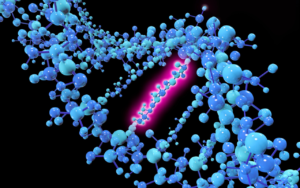The development of the nervous system is a remarkable process that encompasses intricate stages, leading to the formation of a highly sophisticated network that governs human behavior, cognition, and motor functions. This blog delves into the advanced concepts of neurogenesis and synaptogenesis, shedding light on the intricate mechanisms that drive the formation and refinement of the nervous system.
Table of Contents
Neurogenesis: Building the Blueprint of the Nervous System
Neurogenesis stands as a pivotal phenomenon within the intricate tapestry of the nervous system’s development. It embodies the creation of new neurons, or nerve cells, from neural stem cells, a process that plays a vital role not only during embryonic stages but also in adulthood. As we delve into the fascinating world of neurogenesis within the broader context of the development of the nervous system, it becomes evident that this process is not only the architect but also the sustainer of our cognitive abilities and adaptability.
Unveiling the Essence of Neurogenesis in Neurodevelopment
The journey of neurogenesis commences during embryonic development, shaping the very foundation of our nervous system. Neural stem cells, nestled within the neural tube, undergo a series of intricate differentiations, giving rise to diverse neuronal populations that will orchestrate our sensory experiences, thoughts, and actions. Beyond embryogenesis, neurogenesis persists within specific brain regions, notably the hippocampus, even in adulthood. This ongoing creation of new neurons fuels neural plasticity, enhancing our capacity to learn and remember, ultimately reaffirming the brain’s ability to evolve over a lifetime.
Neurogenesis: An Inextricable Thread in the Web of Synaptogenesis
Neurogenesis and synaptogenesis are inextricably linked, weaving a complex web of connections within the nervous system. As new neurons emerge, they seek connections through synapses, intricate junctions that facilitate the transmission of signals between neurons. These connections form the neural circuits that underpin our thoughts, emotions, and behaviors. Thus, neurogenesis not only lays the foundation of neural architecture but also actively contributes to the dynamic construction and refinement of the synapses that allow us to perceive the world, adapt to challenges, and thrive in a constantly changing environment.
Embryonic Neurogenesis
Embryonic Neurogenesis is a pivotal phase in the intricate tapestry of Development of the Nervous System: Neurogenesis. During embryonic development, the neural tube undergoes a remarkable transformation, giving rise to the foundation of the nervous system. Neural stem cells within this tube undergo a process of division and differentiation, sculpting a diverse array of neurons that form the building blocks of the brain and spinal cord. This orchestrated dance of cellular differentiation shapes the forebrain, midbrain, and hindbrain, each region hosting distinct neuronal populations responsible for various sensory, motor, and cognitive functions. This phase of neurogenesis sets the stage for the brain’s future complexity, serving as the bedrock upon which the entire nervous system’s functionality is constructed.
The intricate choreography of embryonic neurogenesis involves an intricate interplay of genetic and molecular cues that guide the destiny of neural stem cells. These nascent cells transform into a breathtaking array of neuron types, each specializing in transmitting specific signals and information. This process lays the foundation for the intricate neural circuits that drive human cognition, behavior, and motor skills. As we delve deeper into the awe-inspiring symphony of Embryonic Neurogenesis within the context of Development of the Nervous System: Neurogenesis, we unlock the secrets behind the early formation of our brain, setting the stage for a lifetime of learning, growth, and neural plasticity.
Adult Neurogenesis
In the captivating journey of nervous system development, a lesser-known chapter unfolds: adult neurogenesis. While the bulk of neurogenesis predominantly occurs during embryonic stages, adult neurogenesis emerges as a fascinating phenomenon in specific brain regions, notably the hippocampus. This process involves the birth of new neurons from neural stem cells, defying the once-established notion that our neural circuitry remains fixed throughout adulthood. The hippocampus, a vital hub for learning and memory, remains a prime stage for this ongoing act of neural rebirth. By delving into the complexities of adult neurogenesis, we embark on a voyage that showcases the brain’s remarkable capacity for adaptation and regeneration, redefining our understanding of nervous system development.
Understanding adult neurogenesis unfolds a fresh perspective on the intricate tapestry of nervous system development. These newborn neurons integrate seamlessly into existing neural networks, bolstering cognitive processes and enriching memory formation. Scientific inquiries have illuminated the role of environmental factors, such as enriched experiences and physical activities, in stimulating adult neurogenesis. This connection underscores the malleability of the nervous system, opening avenues for interventions that harness the potential of adult neurogenesis for cognitive enhancement and neurorehabilitation. As the enigma of adult neurogenesis continues to captivate researchers, it amplifies our comprehension of the brain’s regenerative prowess and inspires innovations aimed at optimizing neural development throughout a lifetime.
Synaptogenesis: Wiring the Neural Network
Synaptogenesis, a pivotal aspect of the Development of the Nervous System: Neurogenesis, plays a remarkable role in wiring the intricate neural network. This intricate process involves the formation of synapses, the vital connections between neurons that enable seamless communication throughout the brain and body. As neurons extend their axons and dendrites, synapses emerge at points of contact, fostering the establishment of functional connections. These connections can be excitatory or inhibitory, governing the direction of signal transmission. Synaptogenesis operates through complex molecular mechanisms, with neural cell adhesion molecules (CAMs) guiding axons to target cells and neurotransmitters fine-tuning synaptic strength. By delving into the nuances of synaptogenesis, we gain insights into the fundamental underpinnings of neural communication, contributing to a comprehensive understanding of neurodevelopment and its intricate interplay with neurogenesis.
Structural Changes during Synaptogenesis
During the intricate process of synaptogenesis, a pivotal phase in neurogenesis, structural changes within the neural network play a paramount role. As neurons extend their axons and dendrites, forging a complex web of connections, synapses emerge as the vital bridges facilitating communication. These connections can be either excitatory or inhibitory, regulating the flow of signals across the nervous system. These structural transformations are orchestrated by a precise interplay of molecular mechanisms, involving neural cell adhesion molecules (CAMs) and neurotransmitter receptors. Understanding these advanced aspects of synaptogenesis not only deepens our comprehension of neurogenesis but also underscores the remarkable adaptability and plasticity of the developing nervous system. This knowledge bears significance in unraveling the complexities of brain health and cognitive function.
Molecular Mechanisms
During the process of synaptogenesis, a pivotal stage in neural development, intricate molecular mechanisms orchestrate the formation of synaptic connections between neurons. These mechanisms play a critical role in shaping the intricate neural networks that underlie brain function. Neurogenesis, the generation of new neurons, intersects with synaptogenesis as these newly formed neurons establish connections with existing neural circuits. Key players in this process include neural cell adhesion molecules (CAMs) that guide axons to their target cells, neurotransmitters and their receptors that fine-tune synaptic strength, and intricate signaling pathways that ensure precise communication between neurons. Understanding the interplay between molecular processes and neurogenesis during synaptogenesis not only advances our comprehension of neural development but also holds the potential to unlock new insights into neurological disorders and avenues for therapeutic interventions.
Examples of Neurogenesis and Synaptogenesis in Action
Hippocampal Neurogenesis and Learning: Studies have shown that hippocampal neurogenesis contributes to learning and memory. For instance, experiments on rodents have demonstrated that enhanced neurogenesis correlates with improved performance in learning tasks. This underscores the role of neurogenesis in cognitive processes.
Critical Periods in Synaptogenesis: The visual system provides an example of the critical role of synaptogenesis during development. In the visual cortex, ocular dominance columns develop based on the inputs received during a critical period. Deprivation of sensory input during this time can lead to permanent alterations in visual processing.
Role of Experience and Environment
The role of experience and environment in shaping neurogenesis and synaptogenesis is a captivating facet of neural development. These intricate processes are not solely dictated by genetic programming but are profoundly influenced by the interactions an individual has with their surroundings. Neurogenesis, the creation of new neurons, is particularly responsive to experiences and environmental stimuli. Enriching experiences, such as learning new skills, engaging in social interactions, and exposing oneself to novel environments, have been linked to increased rates of neurogenesis in specific brain regions, notably the hippocampus. This phenomenon highlights the brain’s remarkable adaptability and underscores the importance of a stimulating environment in promoting cognitive vitality throughout life. Furthermore, the interplay between experience and neurogenesis isn’t isolated; it closely intertwines with synaptogenesis, the formation of synaptic connections between neurons. As new neurons are generated, they integrate into existing neural circuits through the establishment of synapses. These synapses, which facilitate communication between neurons, are influenced by the quality and quantity of experiences an individual undergoes, thus sculpting the functional architecture of the brain.
The inseparable link between experience, environment, and neurodevelopment extends to synaptogenesis as well. Synapses, the junctions where neurons communicate, form and evolve in response to sensory inputs and experiences. Early life experiences, especially during critical periods of development, play a pivotal role in determining the precise wiring of neural circuits. For instance, in sensory systems like vision, visual experiences during a critical period influence the development of synaptic connections, contributing to the refinement of perceptual abilities. This phenomenon underscores the concept of “use it or lose it,” where synapses that are regularly activated are strengthened, while those that remain inactive are pruned away. The dynamic interplay between experience, environment, neurogenesis, and synaptogenesis unveils the brain’s extraordinary potential for adaptability and growth, encouraging a holistic approach to fostering brain health and cognitive enrichment. As we grasp the intricacies of these processes, we gain valuable insights into optimizing learning, memory, and overall brain function throughout the lifespan.
Conclusion
In conclusion, the orchestrated dance of neurogenesis and synaptogenesis orchestrates the mesmerizing symphony of the nervous system’s development. Neurogenesis, the birth of new neurons, imbues the brain with a remarkable plasticity that extends from embryonic stages into adulthood, perpetually reshaping our cognitive landscape. This ongoing process, particularly evident in the hippocampus, serves as a foundation for learning, memory, and emotional regulation, reminding us of the brain’s remarkable ability to adapt and learn throughout life.
Synaptogenesis, the intricate weaving of neural connections, complements neurogenesis by forming the intricate network that facilitates information transmission. This process, guided by a delicate interplay of molecular cues and environmental stimuli, results in the dynamic synapses that underpin our thoughts, behaviors, and motor actions. The interconnectedness of these two phenomena amplifies the brain’s innate potential, offering tantalizing opportunities for advancing our understanding of brain disorders, optimizing cognitive enhancement, and harnessing the power of neuroplasticity for a brighter future. As our exploration of the complexities of neurogenesis and synaptogenesis advances, so too does our appreciation for the extraordinary mechanisms that shape the essence of human existence.




